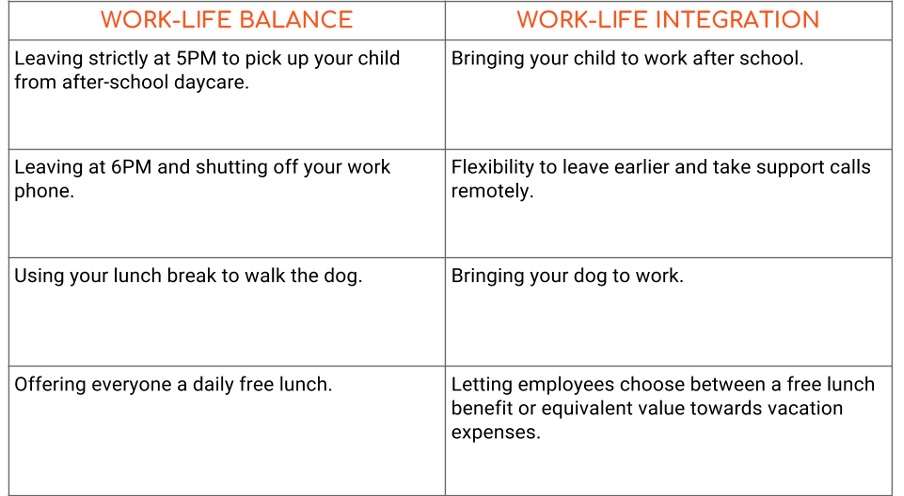A question with thousands of unique answers, many of which could probably be characterized as accurate. As builders opted for stable jobs brought in reliable paychecks but maybe didn’t fit their youthful professional aspirations, baby boomers taught their children to pursue careers about which they feel “passionate,” – today’s generations are looking for different working setup, with a flexible atmosphere or by more practical motivations. While reflecting on personal and professional life changes, Toru Takahashi from GLOBIS University has shared with the Nagaoka Review team about how work-life integration differs from work-life balance and how work-life integration is shaping the workplace.
NR: For decades scholars and practitioners have worked to develop and integrate work-life. In the 21st century, this topic has evolved into one of the most significant business issues, so how does work-life integration differ from work-life balance?
TT: Throughout history, there have been times when people worked hard to survive. In those times, there was no room to think about a fruitful personal life. I think this was the average workers’ behavior until a certain level of economic development was achieved. As people became much more economically satisfied, they began to define their work around the kind of life they want to live. This inverted the more traditional approach of finding a job and building a life around what that job’s hours, income, and other factors permit.
Furthermore, as time progressed, people began to think that private life should be fulfilling, but work should also be fulfilling because work is also a part of life. If good work and good life can have a synergistic effect, there is nothing else that makes people happier.
When you read about work-life balance, you’ll see an image of a scale with work on one side competing for your time and energy with your personal life. When it comes to work-life integration, it’s about finding a way to blend it all, so one aspect doesn’t take over and become the only thing we do with our time. And the recent challenging times have forced us to think beyond conventional ways of working both personally and professionally. People are looking for innovative ways to collaborate, synergize and be more productive to deliver expected outcomes. Today the boundaries between one’s professional and personal life are constantly blurring. Gone are the days of thinking of work-life balance as a complete separation between worlds. Work-life integration is no more an option, and it’s not only more realistic than you can imagine, but it’s also even more empowering than the so-called work-life balance. It offers more choices based on your priorities and it allows you to define the proper integration holistically and create more positive synergies.
It simply means providing more schedule flexibility and moving towards an outcome-based approach rather than the task-based approach—a life where work, kids, pets will grow together. Productivity and output will be a priority, not just the number of hours you put in.

Common examples of the differences between work-life balance and work-life integration. Image via Intelivate.com
NR: How can we achieve work-life integration?
TT: The ability to achieve full work-life integration will probably depend on the degree of flexible working allowed by each organization in particularly and people’s aspiration regarding to this. Also, it’s important to check what policies and expectations are in place before you change how you work!
NR: How organizations and leaders can support work-life integration
TT: Work-life integration means achieving flexible, dynamic interactions between different areas of life and work. In other words, reconciling professional and private life is one of the most significant challenges facing today’s leaders, as the two zones towards digitalization and constant accessibility, making strict separation impossible. Work-life integration requires the support both individuals and the leaders of their organizations. This is a two-way street: if people are willing to devote time outside of traditional working hours to business needs, leaders/managers will have to accept and allow personal needs to be met during regular hours.
Furthermore, leaders can support work-life integration by being flexible about working hours and by setting boundaries. This approach will not work out if you insist that your people work on a set schedule. This may be unavoidable for some roles or professions, but if your business offers flexible working hours, do it.

The new work-life integration concep. Image via job-wizards.com
In addition to flexibility, it would be critical to define each implication of work and life for each person and find the connection between them. This connection is about the relationship between the meaning of work and the meaning of life for each person. The key to proper integration is finding a commonality between the two and then deepening the ordinary sense of the two.
It is also essential for organizations and leaders to pay more attention to coaching and mentoring employees to deepen the meaning of work and life, integrate the two, and ensure flexibility. Leaders should give their employees appropriate support such as skill training, providing relevant opportunities, etc.
NR: What are the key trends that impact the work-life field, and how can leaders determine the future direction for organizations in responding to these challenges?
TT: Work-life integration is an ever-present concern in today’s digital age. Work-life integration is the second highest reason, behind boredom with a role, for someone leaving a job. Therefore, companies are increasingly turning to strategies such as flexible working schemes to attract and retain talent. But flexibility does not always translate into better work-life integration.
Around the world, more and more employees are seeking flexible work arrangements, and as a result, companies are increasingly offering a variety of family-friendly policies. Yet, a Harvard Business Review study of over 400 working parents in Italy reveals that these policies may not be the answer to helping employees achieve better work-life integration.
”Leaders like to see results, but right now, they don't need to focus on numbers and success. It's time to focus their efforts on understanding what makes a happy employee and creating diverse organizational cultures in which employees feel comfortable using them
Toru TakahashiManaging Director, GLOBIS Global Education
NR: Work-life initiatives can be housed in many different areas depending on the organization’s perspective and the primary focus on their efforts. Could these varied perspectives lead to further understanding of what constitutes a comprehensive work-life culture?
TT: While the pursuit of success and prosperity grows in our careers, we want to have time to focus on our health, mental well-being, relationships, and family. More and more organizations are better positioned to promote this practice as jobs that promote work-life balance or work-life integration are on the increase. This is not a case of clinging to what is fashionable or giving the appearance of a modern place to work. This is because a company has increase competitive advantage if it has a workforce that leads a balanced lifestyle.
A motivated employee is more valuable to their organization than one who is disengaged. To prevent workers from reaching a state where they’re no longer able to work effectively, a company must develop a work-life integration policy that puts employees first. Balanced employees are confident and driven in their work, which increases productivity and cuts down on conflict among coworkers and management. Perhaps therefore companies who encourage work-life balance have higher employee retention rates.
”Work-life integration policies can significantly impact a company’s culture; a genuinely comprehensive work-life balance policy will protect the organization while simultaneously prioritizing employee wellness
Toru TakahashiManaging Director, GLOBIS Global Education
NR: Many organizations today couple their work-life initiatives with their diversity and inclusion programs. Are these elements the significant drivers of work-life perspectives?
TT: It’s more appropriate to say that the essential element is a culture of respect. To nurture a culture of respect, we should start to know various people’s perspectives and look at things from multiple angles. And here we need diversity and inclusion because things around us are not only black or white. There are a lot of gray areas. And while most business leaders now believe having a diverse and inclusive culture is critical to performance, they don’t always know how to achieve that goal, mainly when discussing work-life integration. Diversity and inclusion programs could be the significant drivers of work-life perspectives if leaders know how to acquire diversity and generate positive results for both parties, both for the organization and society/employees.

What does inclusion really mean? The science of inclusion by Deloitte
NR: With entrepreneurial leadership experience here, where should work-life leaders focus their time and energy to affect constructive change?
TT: When technology advancements allow us to connect with people anywhere, at any time, and the work environment is in a continuous change, an excellent work-life integration needs to be a new vision for today’s leaders.
From a business perspective, most entrepreneurs already have a mindset of work-life integration (WLI). They stopped thinking that working harder—longer hours and more days in a year—increases productivity. As the business leaders’ mindsets changed, today, they emphasize people rather than outcomes. An entrepreneur without WLI will not succeed. They need to do a better job understanding their employees’ work habits and helping them to create a work-life integration, as everyone has different needs for flexibility; a one-size-fits-all policy won’t benefit everyone.
NR: Can the new technologies (team communication tools like Slack, Microsoft Teams, Zoom, etc.) be implemented to support a work-life integration mentality in the organization?
TT: Absolutely. Those will leverage it.
There have never been more ways for us to get things done and stay in touch online. From a business perspective, this helps you to be more responsive to customers and facilitates collaboration. Still, the same technology also empowers you to stay connected with friends and family while you’re at work. Technology is a part of our life, and in the near future it’s the primary tool that can help us make work-life integration easier.
NR: What would work-life integration look like in the age of COVID-19?
TT: Covid-19 upended our jobs, impacted our way of working, communicating, connecting and creating. Still, we need first to recognize that COVID-19 has dramatically changed personal and work dynamics, and we need to let go of the mental model of thinking of worktime and home-time being distinct and separate blocks. The idea of work-life balance assumes that it is possible to balance out both areas of life harmoniously. The post-Covid era will be flexible. And integration will allow us to exchange and interact actively between different areas of work and life. Integration will also enable us to throw away the idea of being the “perfect” partner or parent and work instead on being more open, honest, and even vulnerable.











